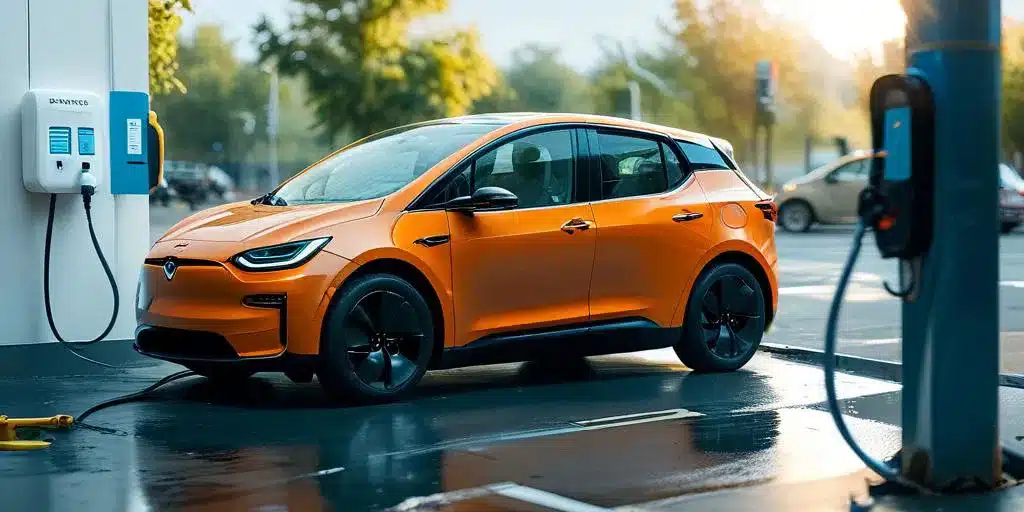Table of Contents
Electric vehicles (EVs) have gained significant attention for their eco-friendliness and potential to reduce carbon emissions. As their popularity rises, so do concerns about their safety in crash situations. Research indicates that electric vehicles are not inherently more dangerous in a crash compared to traditional gasoline-powered cars, but certain factors surrounding their design and battery technology can influence safety outcomes.
The battery systems in EVs, while generally safe, can pose unique challenges in crash scenarios. Understanding how these vehicles perform under impact is crucial for consumers and manufacturers alike. Advances in technology and engineering continue to improve the safety features of electric vehicles, making them competitive with conventional models.
In addition to vehicle design, driver behavior and adherence to safety protocols play essential roles in crash outcomes. Evaluating extensive crash data from both electric and conventional vehicles reveals important insights that can shape future regulations and safety standards.
Safety Analysis of Electric Vehicles
Electric vehicles (EVs) bring unique safety considerations, particularly regarding crashworthiness and battery safety. Understanding these factors is crucial for consumers and manufacturers alike.
Crashworthiness of Electric Vehicles
The crashworthiness of electric vehicles has been a focus in safety assessments. Many EVs are designed with robust structures to absorb impact energy and protect passengers. Models undergo rigorous testing according to standards set by organizations such as the National Highway Traffic Safety Administration (NHTSA) and the Insurance Institute for Highway Safety (IIHS).
Key features include:
- Reinforced passenger compartments: Aids in maintaining structural integrity.
- Crumple zones: These areas deform during a crash to absorb energy and reduce occupant injuries.
Data indicate that several electric models perform well in crash tests, often earning high safety ratings. Involvement in an accident reveals that EVs, like their internal combustion engine (ICE) counterparts, can sustain injuries, but their safety designs offer significant protection.
Battery Safety During Collisions
Battery safety is a critical aspect of electric vehicles accident analysis. Lithium-ion batteries used in most electric vehicles have unique risks when compromised during collisions. The potential for thermal runaway can lead to fires, though such incidents are relatively rare.
Factors influencing battery safety include:
- Location of batteries: Typically mounted low in the vehicle, which can lower the center of gravity and enhance stability.
- Design features: Many manufacturers implement protective casings and systems to prevent punctures or short circuits during crashes.
Monitoring and development of innovative battery technologies aim to minimize risks. Research continues to advance, focusing on creating safer battery compositions and emergency response procedures during incidents.
Legal Considerations and Accident Response
After an electric vehicle crash, there are crucial legal aspects to address. Understanding the importance of seeking legal assistance and properly reporting the incident can significantly impact the outcome of any claims or liabilities.
Seeking Legal Assistance After an Electric Vehicle Crash
Following an electric vehicle accident, consulting a qualified attorney can provide essential guidance. An Arvada car accident lawyer can help navigate the complexities of laws specific to electric vehicles.
Legal representation can assist in determining liability, especially if the vehicle’s battery or design played a role in the crash. They can also handle insurance negotiations and ensure that all damages—both economic and non-economic—are considered.
Having expert legal support is vital to protect one’s rights throughout the process.
Reporting and Documenting Electric Vehicle Accidents
Proper documentation is critical in any electric car accident scenario. Collecting evidence at the scene, such as photos of the vehicle, road conditions, and the surrounding area, is necessary. This information can be vital for insurance claims and legal proceedings.
In addition, submitting a police report is essential, as it provides an official account of the incident. Be sure to include details about the electric vehicle involved, including make, model, and any safety features.
This comprehensive collection of information can serve as a robust foundation for future claims and legal actions.
Conclusions
Electric vehicles (EVs) are not inherently more dangerous in a crash compared to traditional gasoline-powered cars. In fact, many EVs are designed with advanced safety features and structural integrity that can enhance passenger protection. Their low center of gravity, due to heavy battery placement, can reduce rollover risks. However, concerns exist regarding battery fires and the silent operation of EVs, which can pose risks to pedestrians.
Additionally, the weight of electric vehicles may affect crash dynamics, potentially leading to more severe impacts in collisions with smaller vehicles. Overall, while EVs have unique characteristics, safety largely depends on design, technology, and driver behavior rather than the vehicle’s power source alone.


